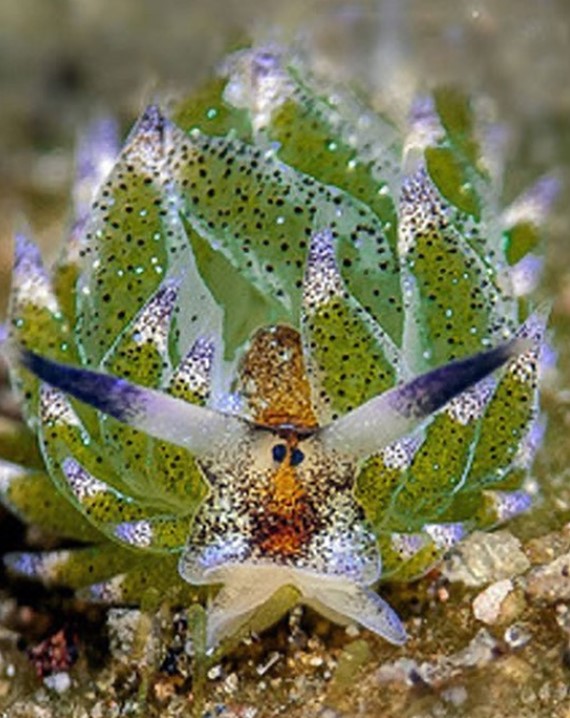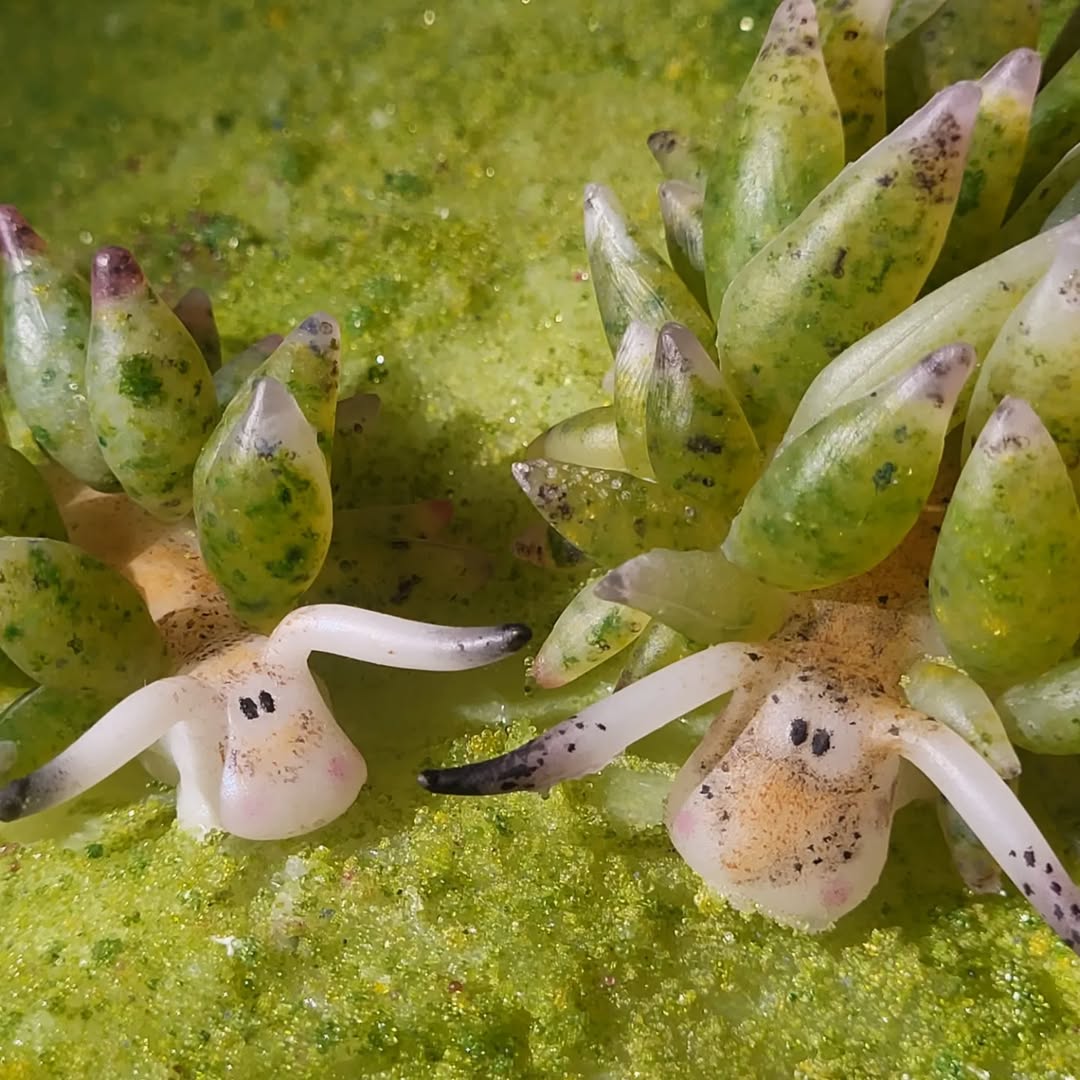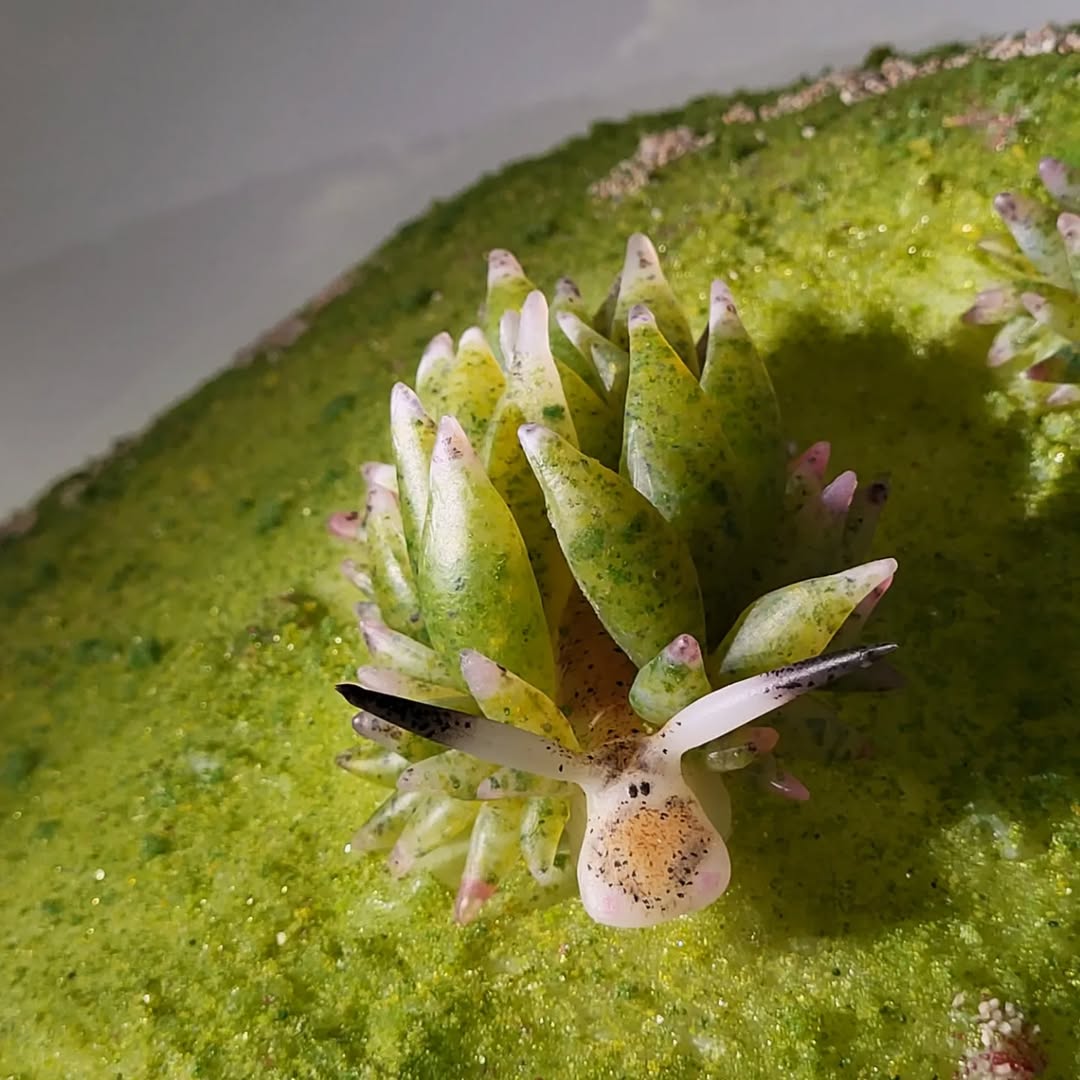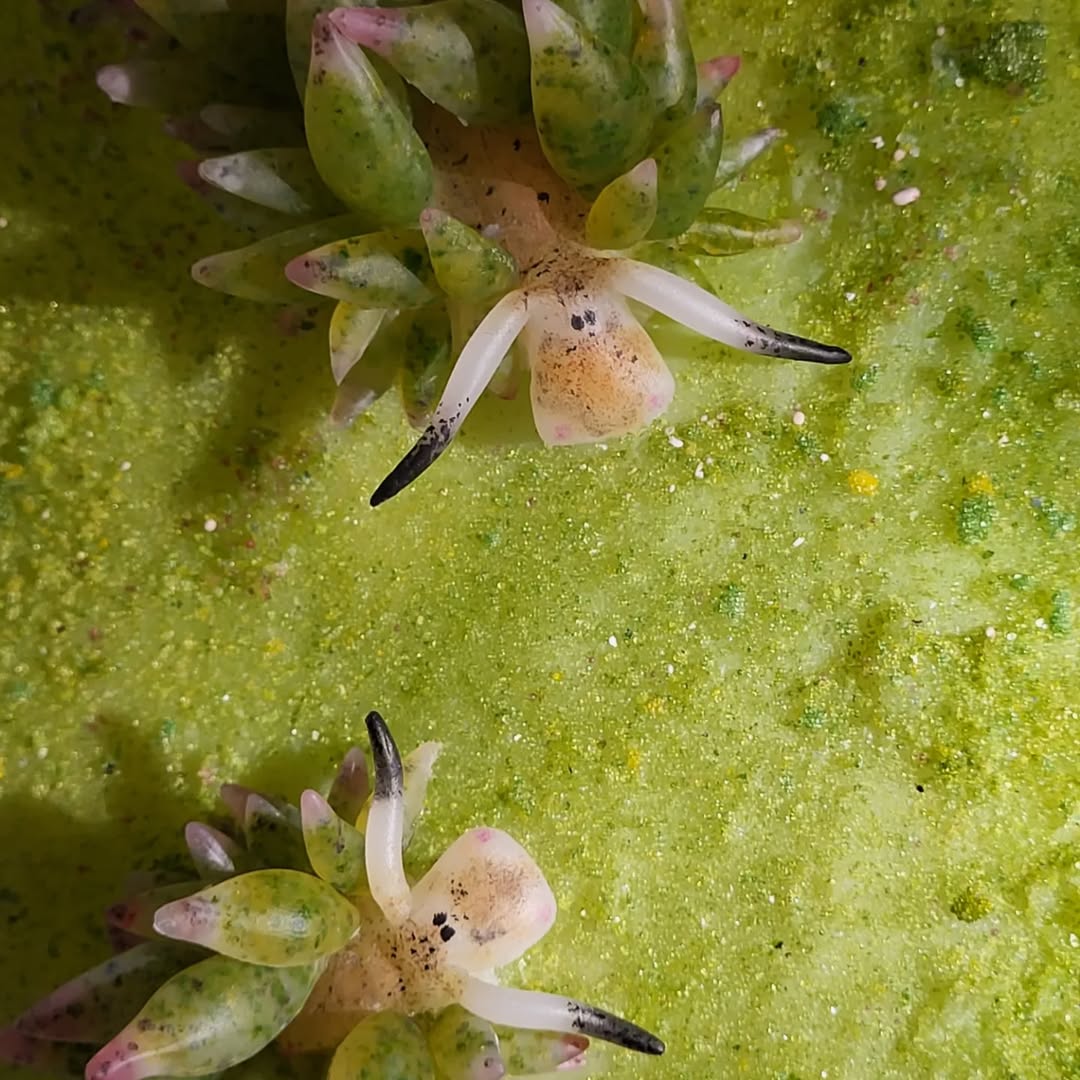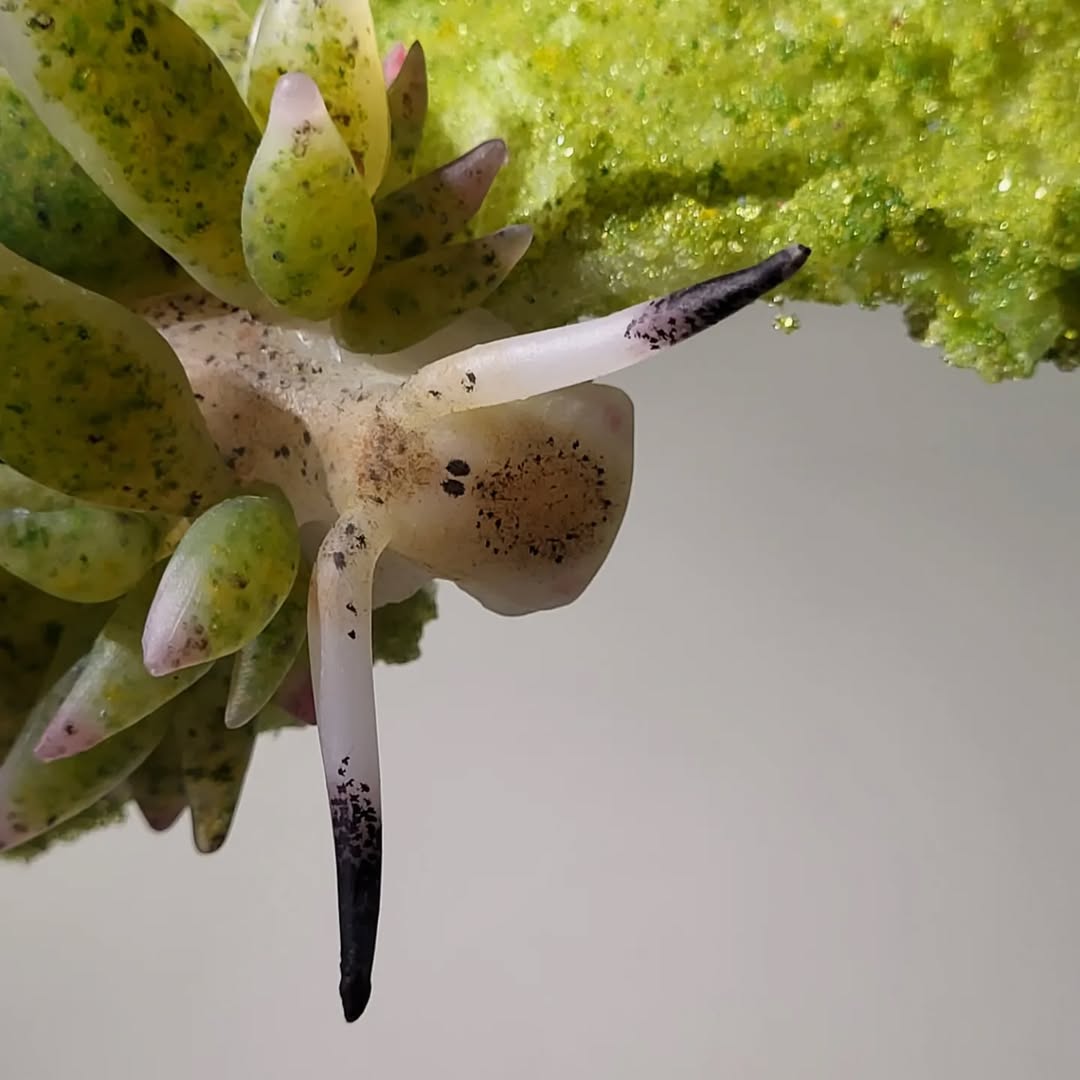It takes a sharp-eyed diver to spot one of the ocean’s most endearing and elusive molluscs. Measuring no more than a centimetre long – about the width of a fingernail – Costasiella kuroshimae, affectionately known as the “leaf sheep”, is a marvel of camouflage. This tiny sea slug blends seamlessly with the green seaweed it inhabits and consumes, making it incredibly difficult to detect in its natural habitat.
++ Shy yellow boxfish and banded pipefish filmed exploring reef together
But what makes the leaf sheep truly remarkable is its ability to turn sunlight into energy. Much like plants, these sea slugs become solar-powered after feeding on certain seaweeds. It’s an unusual trick in the animal kingdom – and one that scientists find fascinating.
Seaweeds, like land plants, contain chloroplasts – microscopic structures within their cells that enable photosynthesis. This is the process of converting sunlight and carbon dioxide into sugars, which serve as energy.
Most animals digest the chloroplasts for the sugars they produce. But the leaf sheep has evolved to do something quite different. Rather than breaking them down, it stores the chloroplasts intact inside its own body.
Along its back are cerata – leaf-shaped extensions that resemble miniature fronds. These are not just for show: they’re part of the digestive system and act as storage units for the chloroplasts. Once inside, the chloroplasts continue to photosynthesise, giving the sea slug an internal, sun-powered food source. So long as it remains in sunlit, shallow waters, the leaf sheep can keep itself fed by harnessing the energy of sunlight.
This species was first recorded in the early 1990s off the Japanese island of Kuroshima – hence the name kuroshimae. Since then, divers exploring tropical waters of Indonesia and the Philippines have found them nestled on a very specific type of green algae, Avrainvillea, which appears to be their only known diet.
++ Herpes virus rapidly reprogrammes human DNA within an hour
Leaf sheep are fussy eaters, and this exclusivity explains their relatively limited distribution. Their eggs are laid in precise spiral patterns and hatch into larvae that drift freely before settling. Like many sea slugs, they begin life with tiny shells, which they later shed in favour of a soft, exposed body.
The act of hijacking chloroplasts is known in scientific circles as kleptoplasty. It’s a rare phenomenon, but not unique to the leaf sheep. In British waters and along parts of the European coastline, the green elysia (Elysia viridis) also performs this botanical theft. These sea slugs absorb chloroplasts from Codium seaweed – colloquially called “dead man’s fingers” – and store them in their wing-like flaps, which they spread to absorb more sunlight. When unfurled, the green elysia resembles a floating leaf – a perfect disguise as well as a functional solar panel.
Perhaps even more extraordinary is another chloroplast-stealing slug, Elysia marginata, which possesses an astonishing ability: it can detach its own head from its body.
The head, still alive, crawls away and – over time – regenerates an entirely new body. While the discarded torso may linger for a few days, it does not regenerate a new head. This self-decapitation might serve as a radical method of removing parasite-ridden tissue.
Such feats blur the lines between animal and plant, showcasing the astonishing versatility of life in the sea. As marine biologists continue to uncover these underwater oddities, the humble sea slug proves time and again that evolution holds many surprises beneath the surface.

